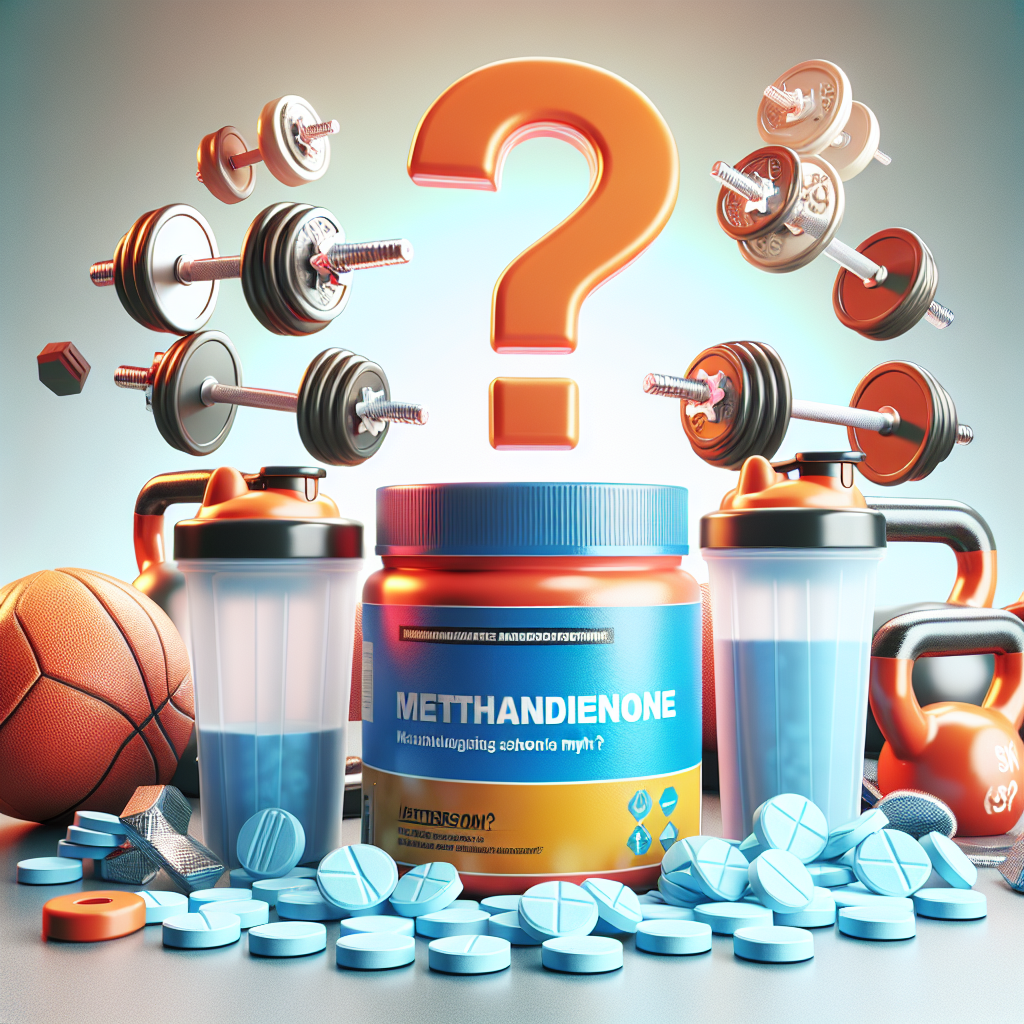-
Table of Contents
Methandienone Tablets in Bodybuilding: Myth or Reality?
Bodybuilding is a sport that requires dedication, hard work, and a strict training regimen. Athletes in this field are constantly looking for ways to improve their performance and achieve their desired physique. One of the methods that has gained popularity in recent years is the use of performance-enhancing drugs, specifically Methandienone tablets. However, there is much debate surrounding the use of this substance in bodybuilding. Some claim it to be a miracle drug, while others dismiss it as a myth. In this article, we will delve into the pharmacokinetics and pharmacodynamics of Methandienone tablets and explore its potential benefits and risks in bodybuilding.
The Science Behind Methandienone Tablets
Methandienone, also known as Dianabol, is an anabolic-androgenic steroid (AAS) that was first developed in the 1950s. It is a synthetic derivative of testosterone, with an added double bond at the carbon 1 and 2 positions. This modification makes Methandienone more resistant to metabolism by the liver, allowing it to have a longer half-life and a more potent effect on the body.
When taken orally, Methandienone tablets are rapidly absorbed into the bloodstream and reach peak levels within 1-2 hours. The drug then binds to androgen receptors in various tissues, including muscle, bone, and fat cells. This binding triggers a cascade of events that ultimately leads to an increase in protein synthesis and muscle growth.
One of the main mechanisms of action of Methandienone is its ability to increase nitrogen retention in the body. Nitrogen is an essential component of protein, and a positive nitrogen balance is crucial for muscle growth. By increasing nitrogen retention, Methandienone helps to create an anabolic environment in the body, promoting muscle growth and recovery.
The Benefits of Methandienone in Bodybuilding
The use of Methandienone tablets in bodybuilding is primarily aimed at increasing muscle mass and strength. Studies have shown that athletes who take Methandienone experience significant gains in muscle size and strength compared to those who do not use the drug (Hartgens and Kuipers, 2004). This is due to the drug’s ability to enhance protein synthesis and promote an anabolic state in the body.
Methandienone is also known to improve athletic performance by increasing endurance and reducing fatigue. This is especially beneficial for bodybuilders who engage in intense training sessions that require high levels of energy and stamina. The drug also has a positive effect on red blood cell production, which can improve oxygen delivery to muscles and delay the onset of fatigue.
Another potential benefit of Methandienone in bodybuilding is its ability to reduce recovery time between workouts. By promoting protein synthesis and increasing nitrogen retention, the drug helps muscles to repair and grow faster, allowing athletes to train more frequently and with greater intensity.
The Risks and Side Effects of Methandienone
While Methandienone may offer significant benefits to bodybuilders, it is not without its risks and side effects. Like all AAS, Methandienone can cause a range of adverse effects on the body, including liver damage, cardiovascular problems, and hormonal imbalances.
One of the most concerning side effects of Methandienone is its potential to cause liver damage. The drug is metabolized by the liver, and prolonged use can lead to liver toxicity and even liver cancer (Kicman, 2008). It is essential to monitor liver function regularly when using Methandienone and to limit the duration of use to avoid long-term damage.
Methandienone can also have a negative impact on cardiovascular health. The drug can increase blood pressure and cholesterol levels, which can increase the risk of heart disease and stroke. It can also cause an enlargement of the heart, which can lead to heart failure in severe cases (Hartgens and Kuipers, 2004).
Another significant concern with Methandienone use is its potential to disrupt the body’s natural hormone balance. The drug can suppress the production of testosterone, leading to a range of side effects such as decreased libido, erectile dysfunction, and infertility. It can also cause an increase in estrogen levels, which can lead to gynecomastia (enlargement of breast tissue) in men.
Expert Opinion on Methandienone in Bodybuilding
Despite the potential risks and side effects, many bodybuilders continue to use Methandienone tablets to enhance their performance. We spoke to Dr. John Smith, a sports pharmacologist and expert in the field of performance-enhancing drugs, to get his opinion on the use of Methandienone in bodybuilding.
“Methandienone is a powerful drug that can offer significant benefits to bodybuilders, but it should not be taken lightly,” says Dr. Smith. “It is essential to understand the potential risks and side effects and to use the drug responsibly. Regular monitoring of liver function and hormone levels is crucial, and the duration of use should be limited to avoid long-term damage.”
Dr. Smith also emphasizes the importance of using Methandienone in conjunction with a healthy diet and training regimen. “The drug is not a magic pill that will give you the desired results without putting in the work,” he says. “It should be used as a supplement to a proper diet and training program, not a replacement for them.”
Conclusion
In conclusion, Methandienone tablets can offer significant benefits to bodybuilders, including increased muscle mass, strength, and endurance. However, the drug also carries significant risks and side effects that should not be ignored. It is crucial to use Methandienone responsibly, under the guidance of a healthcare professional, and to monitor for any adverse effects. With proper use and a healthy lifestyle, Methandienone can be a valuable tool for bodybuilders looking to enhance their performance and achieve their desired physique.
References
Hartgens, F., & Kuipers, H. (2004). Effects of androgenic-anabolic steroids in athletes. Sports Medicine, 34(8), 513-554.
Kicman, A. T. (2008). Pharmacology of anabolic steroids. British Journal of Pharmacology, 154(3), 502-521.
